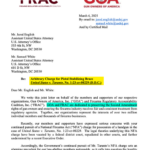Navigating the New Trade Landscape: Impacts of Tariffs on Smartphones and Tech
Tháng 4 13, 2025
CZ Scorpion Case: A Legal Precedent for Pistol Brace Ownership
Tháng 4 13, 2025Tariff Impacts on Smartphones, Computers, and Chips: Analyzing the Current Landscape
The ongoing tariffs on essential technology products, such as smartphones, computers, and semiconductor chips, continue to have significant repercussions for global trade, particularly concerning relations between the United States and China. Despite the easing of some trade restrictions in recent months, the consistent imposition of these tariffs reveals a complex interplay of domestic politics and international trade dynamics.
Continued Tariff Challenges
Despite ongoing negotiations aimed at easing trade tensions, the insistence on maintaining a 20% tariff on key technologies signifies a cautious governmental approach to safeguarding domestic industries. While this approach is intended to bolster local production, it simultaneously complicates international trade relationships and supply dynamics. Notably, the longstanding U.S.-China trade war initiated in the previous administration serves as a backdrop to the current situation, which has seen various phases of escalation and temporary resolution. The nuances of this trade conflict remain delicate, with core issues still left unresolved. China’s President Xi Jinping convened over 40 top global CEOs to address escalating U.S.-China trade tensions, emphasizing the need for international stability and collaboration. Read more here.
Economic Implications and Industry Impact
The continuation of tariffs creates substantial economic implications that reverberate across industries reliant on these technologies. Companies are likely to face increased costs associated with imports, which can lead directly to heightened consumer prices. This economic pressure can lead to supply chain disruptions that affect not only technology giants but also everyday consumers reliant on these products for their daily activities. The intricate nature of international supply chains means that even minor tariff adjustments can have cascading effects on production, transportation, and overall consumer engagement.
Furthermore, the tariffs aim to protect local industries but can also stymie economic growth. With elevated costs to importers, consumer purchasing power could decline, ultimately leading to reduced trade volumes and a hindrance to economic prosperity.
The Crucial Role of Semiconductors
Amid these recent developments, one of the sectors most profoundly impacted is the global semiconductor industry. Given the critical role that chips play in virtually all modern technology—from automobiles to consumer electronics—the tariffs pose a significant challenge. The ongoing global chip shortage had already highlighted the fragility of the industry, and these tariffs could exacerbate existing vulnerabilities within the supply chain.
Navigating Diplomatic Channels
In response to the complexities introduced by these tariffs, recent diplomatic efforts indicate a willingness from both nations to engage in negotiations. The Biden administration has undertaken a comprehensive review of existing trade policies, seeking to strike a balance between protecting domestic industries and fostering improved relations with international trading partners. The nuances of ongoing diplomatic dialogues reflect the importance of finding mutually beneficial terms that can alleviate tensions while ensuring adequate protections for domestic markets.
Conclusion
As the U.S. and China navigate these turbulent waters, the continuation of tariffs on key technology sectors underscores a broader dialogue about trade practices and economic strategy. The balancing act between protective measures for local industries and the need for a collaborative international trade environment is a challenge policymakers must grapple with. Constant monitoring of trade policies and negotiations will remain essential for stakeholders in the tech industry as they adapt to an evolving landscape marked by both opportunity and restrictions. For in-depth updates on this pressing topic, resources from Bloomberg, CNBC, Reuters, and The Wall Street Journal offer valuable insights into the changing dynamics of global trade and technology.
